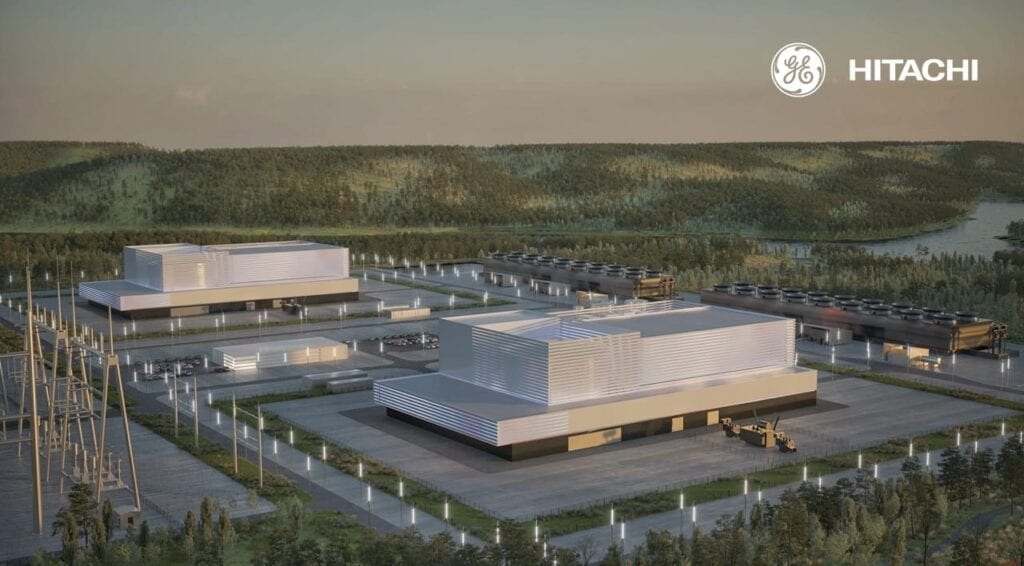GE Hitachi Hits Milestone for SMR Design
Another small modular reactor (SMR) design is moving closer to commercial operation after achieving a licensing milestone.
GE Hitachi Nuclear Energy (GEH), which is designing the BWRX-300 SMR, on Dec. 1 said the U.S. Nuclear Regulatory Commission (NRC) has issued a final safety evaluation report for the first of several licensing topical reports (LTRs) submitted for the SMR. The initial LTR was submitted to the NRC a year ago. GEH said the company is working on a “dramatic simplification” of the BWRX-300’s design.
“Obtaining NRC approval of the specific innovations that simplify the BWRX-300 design is a major milestone in our efforts to license this game-changing technology,” said Jay Wileman, president and CEO of GEH, in a news release. “The BWRX-300 will leverage much of the existing licensing basis of the NRC-certified ESBWR and this LTR will accelerate our commercialization efforts as we remain laser focused on making the first SMR operational later this decade.”
We are proud to announce today that our BWRX-300 small modular reactor has achieved a U.S. licensing milestone. https://t.co/aaKcdS33EW #cleanenergy #SMR pic.twitter.com/CnUWMDSqpw
— GE Hitachi Nuclear (@gehnuclear) December 1, 2020
SMRs and Microreactors
The GEH design is among several SMRs and microreactors being developed as the nuclear power industry continues to accelerate a move into decentralized, distributed power generation. Radiant, a company founded by former Space X engineers, earlier this year announced development of a microreactor that had been studied as a way to provide power for possible settlements on Mars.
Ontario Power Generation in Canada is working on SMR designs, including with GEH, and Portland, Oregon-based NuScale has been at the forefront of U.S. SMR commercialization efforts. The company’s SMR design received final approval from the NRC earlier this year. A NuScale executive participated in discussions on small nuclear power technology at POWER’s Distributed Energy Conference in October.
X-energy, another U.S.-based company, earlier this year talked with POWER about its work on advanced nuclear fuel and reactor design, which the company said could be used for SMRs.

GEH, headquartered in Wilmington, North Carolina, said two more LTRs for the BWRX-300 project were submitted earlier this year. The company, created by General Electric and Hitachi as a global nuclear alliance in 2007, said it expects the review of those reports will be completed over the next several months. It said a fourth LTR was submitted in September of this year.
The company on Tuesday said it expects the LTRs will provide the foundation for development of what it called a Preliminary Safety Analysis Report, which could be used by a utility seeking to use the design and looking for approval from the NRC.
Water-Cooled Design
GEH said the BWRX-300 is a 300-MWe water-cooled, natural circulation SMR with passive safety systems. It leverages the design and licensing basis of GEH’s Economic Simplified Boiling Water Reactor (ESBWR), which was certified by the NRC in 2014.
The ESBWR is s a 1520-MWe Generation III+ boiling water reactor, which GEH calls “the world’s safest light water reactor.” The reactor “has the lowest core damage frequency [industry standard measure of safety] of any Generation III or III+ reactor and can safely cool itself with no AC electrical power or human action for more than seven days,” according to GEH.
GEH on Tuesday said it expects the BWRX-300, thanks to its “dramatic” design simplification, “will require significantly less capital cost per MW when compared to other water-cooled SMR designs or existing large nuclear reactor designs.”
GEH said the BWRX-300 is the 10th evolution of GE’s first boiling water reactor (BWR) design. The company said it “represents the simplest, yet most innovative BWR design” since GE began commercializing nuclear reactors in 1955.
“By leveraging the existing ESBWR design certification, utilizing licensed and proven nuclear fuel designs, incorporating proven components and supply chains and implementing simplification innovations the BWRX-300 can, GEH believes, become cost-competitive with other forms of generation,” the company said.
—Darrell Proctor is associate editor for POWER (@POWERmagazine).